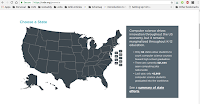Forbes Business Contributor, Laurence Bradford, published a click-bait piece titled, "14 In-demand Tech Jobs Employers Are Struggling To Fill". The article is 15 pages of photos, each containing a basic caption about a purported tech job. The reader has the pleasure of loading all of the Forbes advertising 15 times to get through the article.
Ms. Bradford claims that GlassDoor.com has the following, 1,076,505 positions that "...employers are struggling to fill."
| Job # | Title | Purported GlassDoor Postings |
|---|---|---|
| 1 | IT Architect | 10,487 |
| 2 | Security Engineer | 18,686 |
| 3 | Data Scientist | 20,498 |
| 4 | QA Engineer | 23,543 |
| 5 | Front End Engineer | 25,064 |
| 6 | Mobile Developer | 40,112 |
| 7 | Java Developer | 42,233 |
| 8 | Data Engineer | 49,712 |
| 9 | Network Engineer | 57,008 |
| 10 | Software Engineer | 69,989 |
| 11 | Product Manager | 70,488 |
| 12 | DevOps Engineer | 155,476 |
| 13 | Solutions Architect | 176,372 |
| 14 | Systems Engineer | 316,837 |
| Total | 1,076,505 |
The problem is that GlassDoor only has a total of 441,693 listings
GlassDoor: All Job Openings 441,693 Jobs
Forbes is a staunchly pro-immigration publication...
"Why Pro-Immigration and Pro-Growth Policies are"
- Forbes, Oct 25, 2011 - Economic growth is essential for progress. The broad liberal goal to bring prosperity and justice to as many people as possible relies on ...
"6 Immigrant Stories That Will Make You Believe In"
- Forbes, Oct 4, 2016 - What's also meaningful is that despite all the hot air America, a land of immigrants, remains decidedly pro-immigrant. A 2016 Pew Research ...
"What Will Donald Trump Mean For Immigration?"
- Forbes, Nov 9, 2016 - Ronald Reagan was profoundly pro-immigration and spoke of America as a “shining city on a hill.” Lyndon Johnson and other recent ...
"Illegal Immigrants Don't Lower Our Wages Or Take Our Jobs"
- Forbes, Aug 28, 2015 - Immigration has taken center stage in the race for the Republican Presidential nomination. The conventional wisdom says illegal immigrants ...
"Billionaires Rally Around Immigration, Against Trump's ..."
- Forbes, Mar 12, 2016 - Known for his continuous support for the Democratic Party, Soros' pro-immigration agenda dates back to 1996 and the Emma Lazarus Fund, ...
Archived pages:
Archives:
https://web.archive.org/web/20170511022952/http://www2.forbes.com/business/14-in-demand-tech-jobs-employers-are-struggling-to-fill/
https://web.archive.org/web/20170511021127/http://www2.forbes.com/business/14-in-demand-tech-jobs-employers-are-struggling-to-fill/2/
https://web.archive.org/web/20170511021359/http://www3.forbes.com/business/14-in-demand-tech-jobs-employers-are-struggling-to-fill/3/
https://web.archive.org/web/20170511021602/http://www2.forbes.com/business/14-in-demand-tech-jobs-employers-are-struggling-to-fill/4/
https://web.archive.org/web/20170511021713/http://www3.forbes.com/business/14-in-demand-tech-jobs-employers-are-struggling-to-fill/5/
https://web.archive.org/web/20170511021816/http://www2.forbes.com/business/14-in-demand-tech-jobs-employers-are-struggling-to-fill/6/
https://web.archive.org/web/20170511021930/http://www3.forbes.com/business/14-in-demand-tech-jobs-employers-are-struggling-to-fill/7/
https://web.archive.org/web/20170511022023/http://www2.forbes.com/business/14-in-demand-tech-jobs-employers-are-struggling-to-fill/8/
https://web.archive.org/web/20170511022110/http://www3.forbes.com/business/14-in-demand-tech-jobs-employers-are-struggling-to-fill/9/
https://web.archive.org/web/20170511022217/http://www2.forbes.com/business/14-in-demand-tech-jobs-employers-are-struggling-to-fill/10/
https://web.archive.org/web/20170511022347/http://www3.forbes.com/business/14-in-demand-tech-jobs-employers-are-struggling-to-fill/11/
https://web.archive.org/web/20170511022430/http://www2.forbes.com/business/14-in-demand-tech-jobs-employers-are-struggling-to-fill/12/
https://web.archive.org/web/20170511022526/http://www3.forbes.com/business/14-in-demand-tech-jobs-employers-are-struggling-to-fill/13/
https://web.archive.org/web/20170511022636/http://www2.forbes.com/business/14-in-demand-tech-jobs-employers-are-struggling-to-fill/14/
https://web.archive.org/web/20170511022704/http://www3.forbes.com/business/14-in-demand-tech-jobs-employers-are-struggling-to-fill/15/




